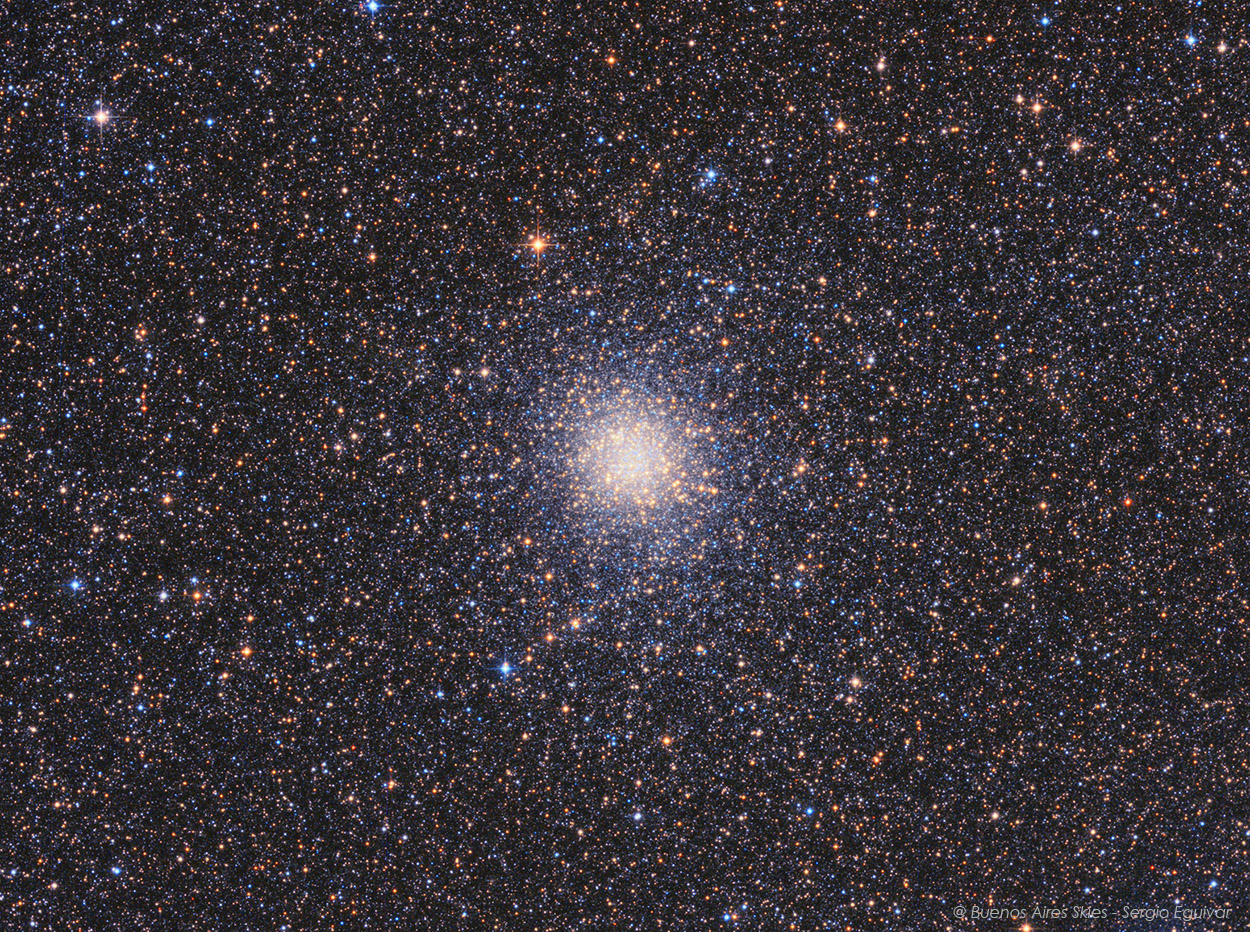
| HOME |
MESSIER 22
GLOBULAR CLUSTER IN SAGITTARIUS
(Image centered at: ra 10 h:15 m / dec + 03º 17')
CLICK THE IMAGE FOR A HIGH RESOLUTION VIEW
August 2022, Observatorio Cielos Albertnos, Buenos Aires, Argentina
DATA
TYPE: Globular Cluster
APPARENT DIAMETER: 32 arc minutes
APPARENT MAGNITUDE (V): 5.1
DISTANCE: 10,6 light years
IMAGE INFORMATION
INSTRUMENT: 8" ORION OPTICS UK (Ultra Grade Optics) w/Televue Paracorr working at at f5,75
CAMERA: QSI 583 WS
MOUNT: SKY WATCHER NEQ6, OAG with Starlight Xpress Lodestar
FILTERS: Baader LRGB Set
SKY CONDITIONS: Bortle 2 skies
EXPOSURES: LRGB (40,40,40,40)
OBJECT DESCRIPTION AND IMAGE SESSION
Messier 22, also known as NGC 6656, is an elliptical globular cluster in the constellation of Sagittarius. Because the cluster is located near the galactic plane the background is packed of stars. It is one of the brightest globular visible in the night sky. The brightest stars are 11th magnitude, with hundreds of stars bright enough to resolve with an 8 inches telescope.
Messier 22 was one of the first globular to be discovered. In 1665 German amateur astronomer Abraham Ihle spotted a hazy patch of stars while looking to planet Saturn which was passing by. In 1764 it was included in Charles Messier catalogue of "comet - like" objects. The cluster spans over 99 +/- 9 light years in its diameter.
Containing some of the oldest known stars, globular clusters are popular objects of study for astronomers. Messier 22 has some additional features that are particularly fascinating: two stellar-mass black holes, and six planet-sized objects (discovered by Hubble) that are not orbiting stars. The cluster is also one of only four of its kind ever found to host a planetary nebula — a short-lived gaseous shell ejected by a star at the end of its life. See its location in the annotated image (labeled in as PK 009-07.1)
MESSIER 22
GLOBULAR CLUSTER IN SAGITTARIUS
ANNOTATED IMAGE AT 100% RESOLUTION